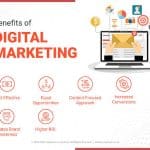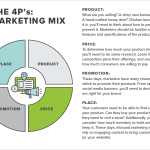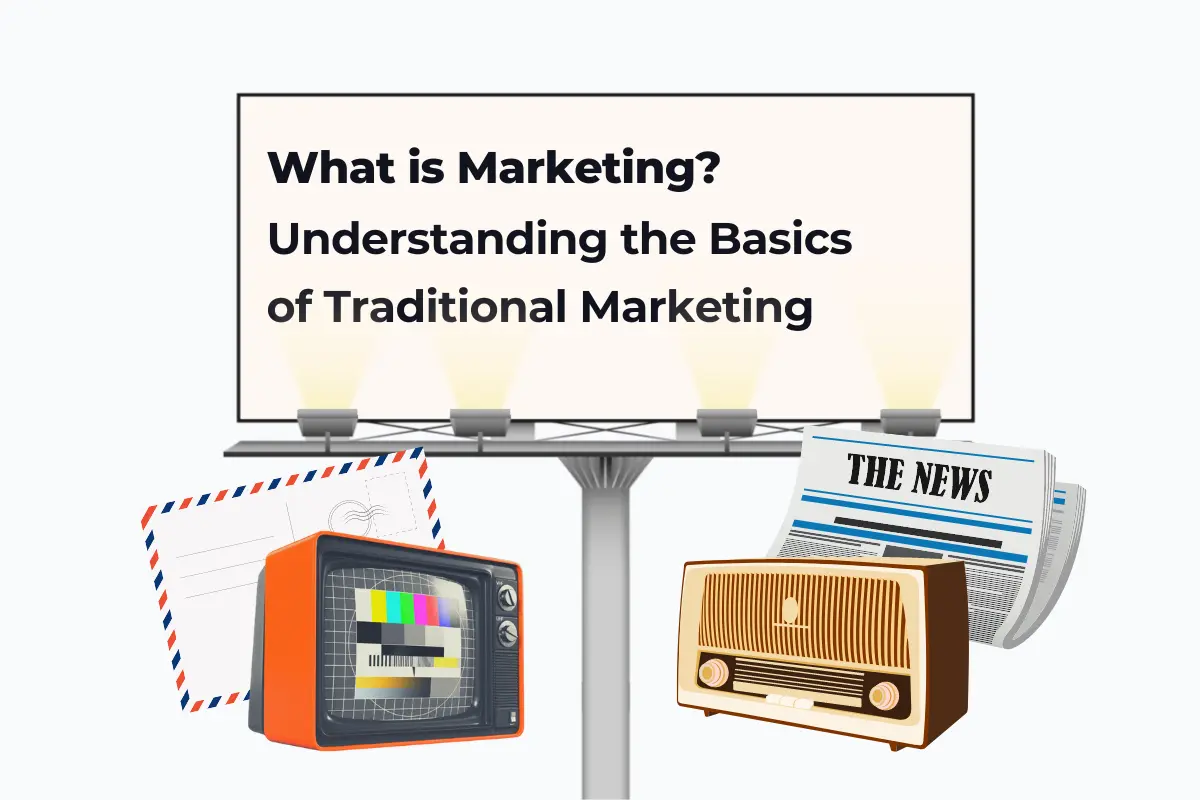Understanding Traditional Marketing: What Does It Mean?
Traditional marketing refers to any form of marketing that is not done online. It is the most longstanding type of marketing, established long before digital marketing materialised. There are many forms of traditional marketing that range from print ads (newspaper, thing magazines), billboards, direct mail, telemarketing, to broadcast (TV, radio).
Most businesses see traditional marketing as a way to reach out to a broad range of audiences. The strategy surrounding it involves casting a wide net, hoping to catch as many potential customers as possible. It’s a means of broadcasting your message or your organization to the masses in hopes of creating awareness, interest, and ultimately, conversion.
Benefits of Traditional Marketing
Why is traditional marketing still relevant in this digital age? For one, it’s a classic and ended up being effective for a lot of businesses. Some of the benefits include –
- Visibility and Access: In traditional marketing, it’s easy for your advertisement to get noticed. It could be seen on a billboard by hundreds, or could land directly into someone’s mailbox. Consumers also do not need internet access to see or hear your ad.
- Personal Touch: Traditional marketing often provides a personal touch that digital marketing cannot fulfill, such as business cards and print ads.
- Tangible: Traditional marketing provides a physical marketing piece that consumers can hold onto.
A Brief History of Traditional Marketing
Traditional marketing is a broad term that encapsulates a myriad of advertising methods that emerged before the advent of the digital age. The concept has its roots in age-old practices that were initially based on the basic necessity of selling goods or services.
The genesis of traditional marketing can be traced back to the ancient civilizations. Early forms of marketing encompassed simple trade, where individuals exchanged what they had for things they needed. However, as societies grew and started to specialize, marketers began to focus on creating demand for their specific products. It eventually evolved into newspaper ads in the 1700s, followed by billboards in the 1800s and radio advertising in the 1920s.
 Understanding the Basics: What is Web Marketing and How It Can Boost Your Business
Understanding the Basics: What is Web Marketing and How It Can Boost Your BusinessThe Evolution of Traditional Marketing
The 20th century marked a significant evolution in traditional marketing. The advent of the television in the 1940s further changed the marketing landscape, offering a powerful new tool to reach an even broader audience. The evolution continued through the 1960s and 1970s with the introduction of telemarketing and direct mail.
Effectiveness of Traditional Marketing
Throughout its history, traditional marketing has been considered effective in reaching broad target demographics. Even with the rise of digital marketing in the 21st century, many businesses still rely on traditional marketing methods to reach those audiences who do not frequently use the internet or prefer more traditional means of information.
Key Components of Traditional Marketing Strategies
Traditional marketing strategies remain a crucial aspect of successful business operation despite the rise of digital marketing. Understanding the key components of traditional marketing strategies can provide a comprehensive insight into how these strategies are formulated and implemented effectively.
Print Advertising
One of the primary components of traditional marketing strategies is Print Advertising. This form of marketing strategy includes brochures, flyers, billboards, and newspaper ads. Print advertising is a proven method of reaching targeted demographics and has a long-lasting impact on potential customers. Though it involves costs for creation and distribution, it has a high return on investment if implemented accurately.
Television and Radio Advertising
Television and Radio Advertising is another critical sector of traditional marketing strategies. These platforms deliver messages directly to specific clusters of potential customer base and possess a significant impact on their choices. It offers a wide reach and can be used to advertise products or services in local and international markets.
 Understanding the Basics: What is Web Marketing and How It Can Boost Your Business
Understanding the Basics: What is Web Marketing and How It Can Boost Your Business Understanding the Basics: What is Affiliation in the Business World?
Understanding the Basics: What is Affiliation in the Business World?Direct Mail Marketing
The final key component of traditional marketing strategies is Direct Mail Marketing. This medium of marketing allows businesses to tailor their message specifically to the selected audience. Businesses can send catalogs, postcards, or letters directly to potential customers, offering them personalized attention and thereby maintaining customer relationship effectively.
The Role of Traditional Marketing in Today’s Digital World
Traditional marketing, encompassing mediums such as billboard advertising, TV commercials, direct mailings, and radio promotions, still plays a significant role in today’s digital-centric world. Despite the rapid growth of digital marketing, traditional marketing is still instilling trust, engaging audiences, and driving sales in many markets.
Building Brand Trust
Traditional marketing mediums often have a longer standing reputation with audiences, leading to a higher level of trust. Local businesses, for example, can greatly benefit from targeted local advertisements such as billboards, newspaper ads, and radio spots. The physical presence of these ads contributes to the reliability and reputability of a business, potentially leading to an increased consumer trust and brand loyalty.
Bridging the Gap Between Digital and Physical Marketing
Despite the advantages of digital marketing, it cannot completely replace the sensory impact that traditional marketing can deliver. Brochures, flyers, and billboards offer tangible experiences that can increase brand recognition and influence purchasing decisions. Additionally, integrating QR codes or website URLs in physical ads can seamlessly bridge the gap between the traditional and digital marketing realms, maximizing the overall marketing reach.
Reaching a Broad Audience
Lastly, traditional marketing strategies are particularly effective in reaching a broad audience, including those who may not be constantly online or even have access to digital tools. For instance, TV and radio ads still serve as powerful platforms to reach out to different age groups and demographics. Thus, while the rise of digital marketing is indisputable, the role and impact of traditional marketing remain significant in today’s digital world.
 Understanding the Basics: What is Web Marketing and How It Can Boost Your Business
Understanding the Basics: What is Web Marketing and How It Can Boost Your Business Understanding the Basics: What is Affiliation in the Business World?
Understanding the Basics: What is Affiliation in the Business World? Understanding the Essentials: What is a Website and Its Significant Features
Understanding the Essentials: What is a Website and Its Significant FeaturesAdvantages and Disadvantages of Traditional Marketing
Traditional marketing, which includes advertising mediums such as television, radio, print ads, and billboards, can provide a plethora of benefits for your business. Reach and Accessibility is one such benefit.
Reach and Accessibility
With a wide demographic and geographic scope, traditional marketing methods can reach a large audience including those without internet access. Moreover, traditional marketing platforms are familiar and straightforward, allowing ease of understanding for all age groups.
Yet, traditional marketing is not without its set of drawbacks. One major disadvantage is the high cost associated with this marketing approach.
High Cost
Maintaining a television, radio, or print ad campaign can become expensive. Costs may include the production of the advertisement itself, the fee for advertising space, and postage for direct mailings. For companies with limited marketing budgets, these costs may make traditional marketing untenable.
Another drawback of using traditional marketing is the lack of detailed analytics.
 Understanding the Basics: What is Web Marketing and How It Can Boost Your Business
Understanding the Basics: What is Web Marketing and How It Can Boost Your Business Understanding the Basics: What is Affiliation in the Business World?
Understanding the Basics: What is Affiliation in the Business World? Understanding the Essentials: What is a Website and Its Significant Features
Understanding the Essentials: What is a Website and Its Significant Features Understanding the Basics: What is Marketing and Why It’s Crucial for Your Business
Understanding the Basics: What is Marketing and Why It’s Crucial for Your BusinessLack of Detailed Analytics
Unlike digital marketing, traditional marketing platforms do not provide detailed engagement or conversion metrics. This lack of quantifiable data makes it difficult to measure the effectiveness of a campaign or to conduct a thorough performance analysis.
